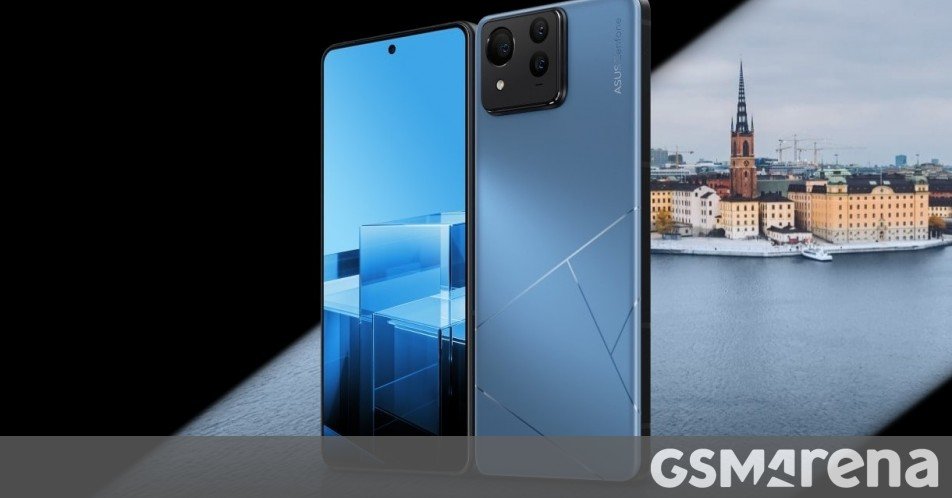In a recent poll, the Asus ROG Phone 8/8 Pro proved to be a potentially very popular model if it could clear one hurdle – the $1,100/€1,100 price was too high (it was even worse for the Pro, $1,200/€1,200/₹95,000).
What if the ROG Phone 8 was cheaper? Wish granted – just not the way you may have thought. This week the company unveiled the Zenfone 11 Ultra, its first large Zenfone since 2021’s Zenfone 8 Flip. This means a larger display, larger battery and (incidentally) an additional camera (the first tele module since the Flip).

The same 12/256GB configuration that costs €1,100 on a ROG phone is available for €1,000/£870 on the Zenfone. And Asus has a €100 discount for early birds, which you can still get as the phone goes on sale in mid-April. There is a 16/512GB version too with a €1,000/£950 base price.
The Asus Zenfone 11 Ultra is essentially an ROG Phone 8 with muted branding – more muted we should say, as Asus was already dialing back the “gaming phone” aesthetic with the 8-series and making it something that will have mass appeal.

Asus Zenfone 11 Ultra: 6.78” 1-144Hz LTPO AMOLED display with FHD+ resolution
Comparing the two models reveals only minor differences – the 6.78” LTPO AMOLED display runs at 144Hz instead of 165Hz and lacks 10-bit colors. Also, the trademark second USB port that the ROG model has is dropped to save on cost. The RGB-illuminated ROG logo on the back and the pressure sensitive triggers on the side are gone too – this isn’t a gaming phone, you know.
And that’s it – you still get a large, fast display, the powerful Snapdragon 8 Gen 3 chipset, a large 5,5000mAh battery with 65W wired and 15W wireless charging, along with goodies like stereo speakers and a 3.5mm headphone jack. Compared to the previous Zenfone 10, this one also has a 32MP tele camera with a 65mm lens (3x), but Asus didn’t see fit to also equip a microSD slot. At least it left the IP68 dust and water resistance intact.


Asus Zenfone 11 Ultra: Snapdragon 8 Gen 3 • 50+32+13MP camera
For more details on the Asus Zenfone 11 Ultra, check out our detailed review. You can also watch our video review below:
Let’s have a brief look at the competition. In Europe, the Samsung Galaxy S24+ comes with Exynos 2400 instead of Snapdragon 8 Gen 3, but it has a 12/256GB configuration for the same price. The 6.7” LTPO display trades a few hertz (it runs at up to 120Hz) for a higher resolution of QHD+ (vs. FHD+ on the Zenfone). The battery is smaller, resulting in a lower active use score (12:30h vs. 14:43h) and wired charging is slower (45W, 58 minutes to full).
Still, the S24+ will receive 7 years of support – longer than basically any Android that isn’t a Pixel and much, much longer than the Zenfone. Asus is still only promising 2 OS updates and 4 years of security patches. Is that good enough for a €1,000 device?
The OnePlus 12 is around the same price for a Snapdragon 8 Gen 3 and 12/256GB memory. It has a 6.82” LTPO display (also a QHD+ 120Hz panel), a higher resolution 48MP ultra wide camera (to go with the 50MP main and 64MP 70mm periscope), plus a 5,400mAh battery. The active use score is a bit lower (14:11h), but charging is faster (24 minutes to full vs. 41 minutes for the Asus). The OnePlus will receive 4 OS updates and 5 years of security patches.


![]()

Samsung Galaxy S24+ • OnePlus 12 • Google Pixel 8 Pro • Apple iPhone 15 Plus
The Google Pixel 8 Pro is half a year old, so the true alternative may be the upcoming 9 Pro (but that’s still months away). This phone uses the Tensor G3, which is better than its predecessors and that’s where the compliments stop. The 6.7” 120Hz LTPO display has slightly less than QHD+ resolution and the 5,050mAh battery inside is slow to charge both wired and wirelessly (30W and 23W, respectively). Battery life is even worse than the S24+ at 11:14h (that Tensor has its flaws). On the plus side, Google will support this phone for 7 years.
The Apple iPhone 15 Plus is also a competitor, even if its spec sheet doesn’t look like it. You get a 6.7” OLED display with not quite QHD+ resolution, a powerful chipset, long software support, stellar battery life (16:33h active use score!), though charging is very slow (1:34h to full). There’s no tele camera, but at least this generation has a 48MP main.
Will you pre-order the Asus Zenfone 11 Ultra or will you wait for the small model – which Asus never officially confirmed to exist? Would you rather have the ROG phone or none of the above?

